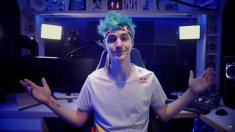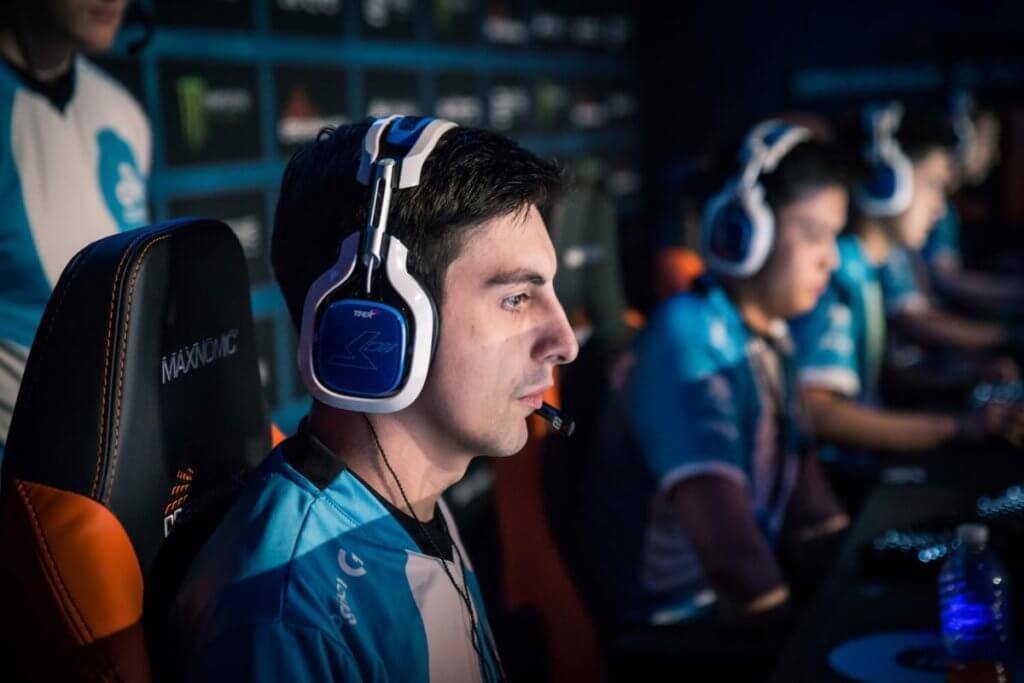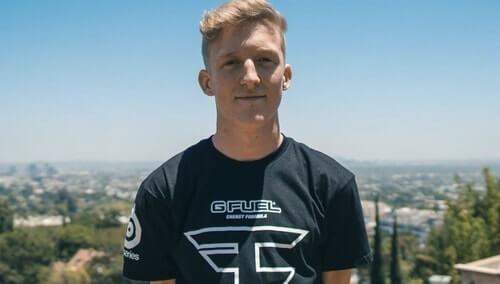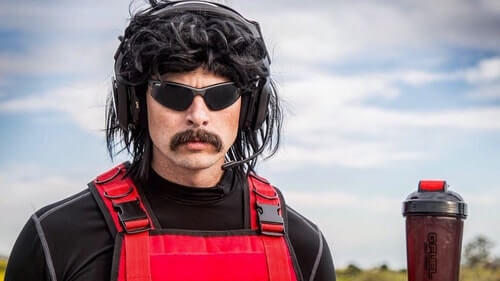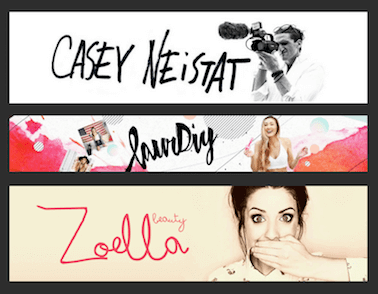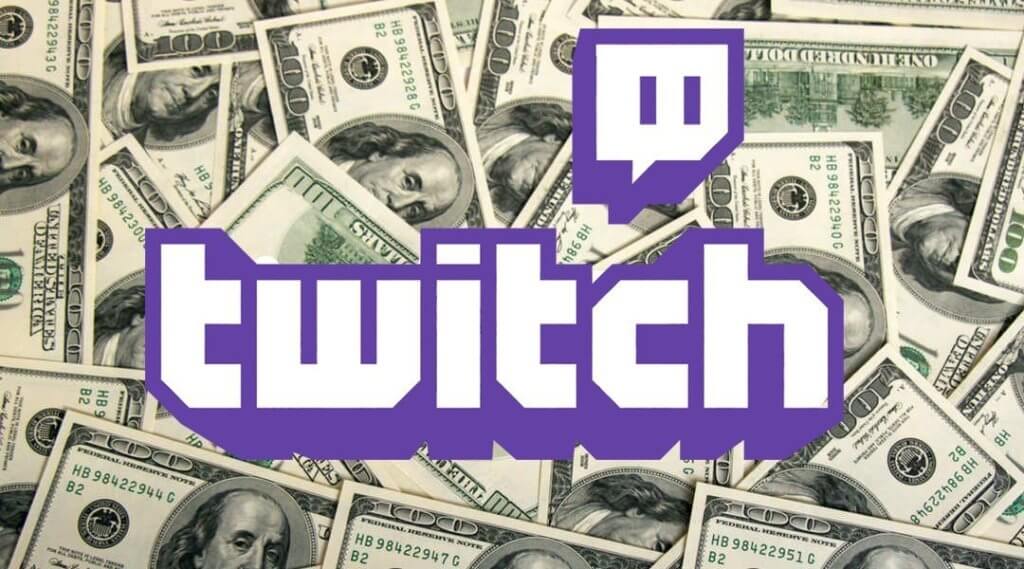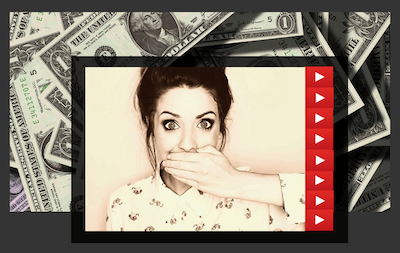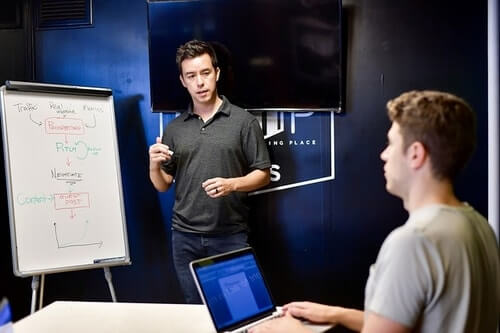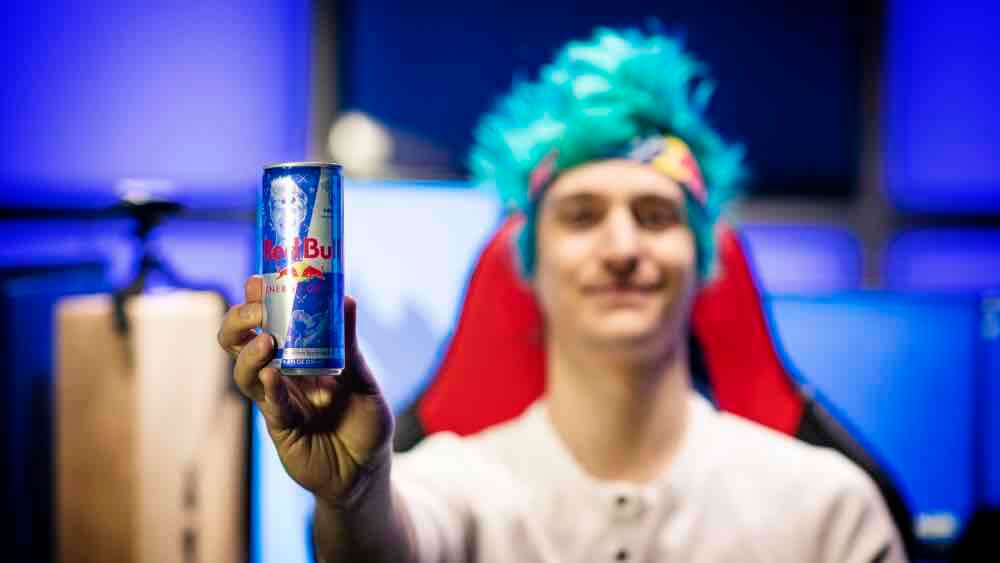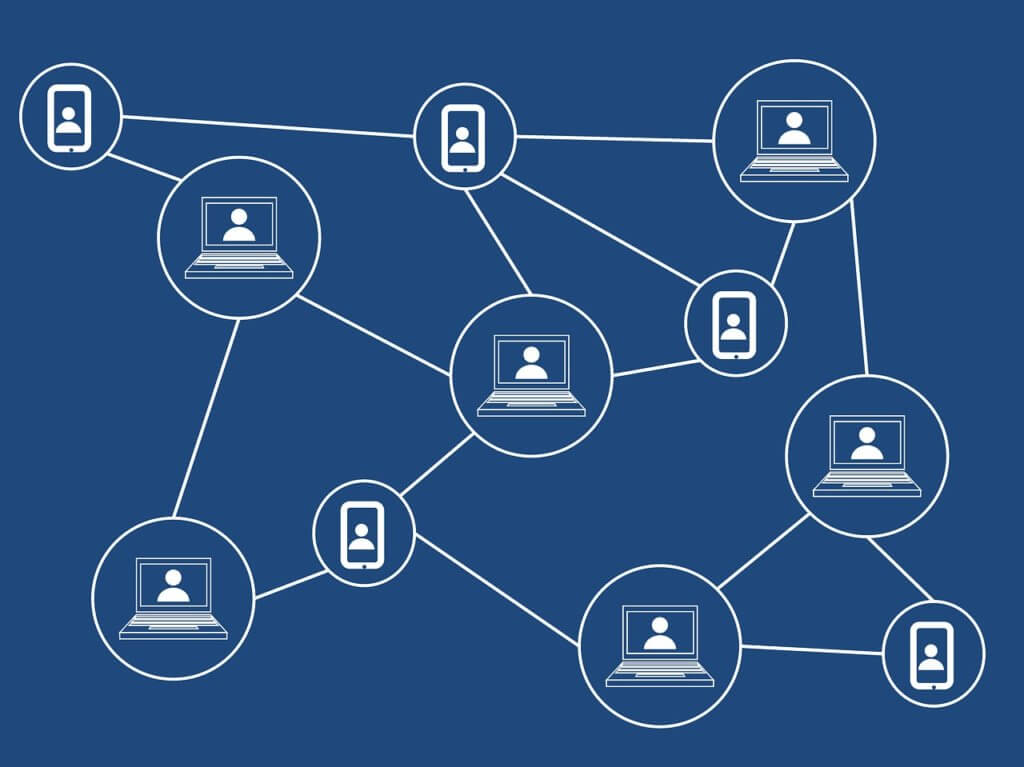Fast navigation
What is encoding Overload and how to fix?
Encoding is a process in which your PC converts the information to fit specific purposes. OBS Studio converts video to the streaming and recording quality of our choice.
Encoding is known to use a lot of CPU. OBS Studio uses x264, which is the best video encoding library currently available. Encoding overload simply means that your computer cannot encode the video at the desired time. This is what causes annoying crashes and freezing of OBS Studio. In this article, I will show you how to fix this surprisingly common OBS problem.
Hardware vs software
First, we need to determine if encoding overload is mainly hardware or a software problem. You should try changing every OBS Studio setting listed below and see if you still experience OBS encoding overload. If so, then it is time to upgrade your PC (more on that later).
Software solutions to OBS encoding overload
1. Downscale the output resolution
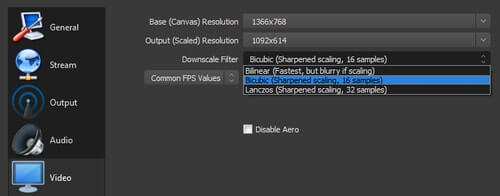
Encoding resolution utilizes the most CPU, and downscaling it should fix your problem. When you are streaming in 1080p, you use twice the amount of pixels compared to 720p resolution. This means your CPU needs to work twice as hard. Downscaling is the process in which OBS Studio shrinks your screen to the desired resolution.
To set up your downscale resolution, go to Settings > Video > Output Resolution. Your base resolution should stay the same, otherwise, your layout will change. You can choose between 3 different downscale filters: bicubic, bilinear, and Lanczos. Bilinear is the fastest, but Lanczos is of ultra-high quality. I recommend you play and see which one you prefer the best. Downscaling doesn’t affect your in-game resolution, just the video you send to Twitch.
2. Drop your frame rate
While you are there, you can also drop FPS. This is another great way to free up your CPU so you don’t get encoding overload. Dropping it to 30 FPS doesn’t impact your stream drastically, and can make all the difference.
3. Switch your encoding preset
OBS Studio uses x264 encoder which has a number of presets that are of different speed. Choosing very fast will use less power and may fix your OBS encoding overload issue. To change encoding preset, go to Settings > Output > Encoder Preset. Warning! You should be careful with changing this setting, as only one step can impact your OBS Studio performance radically.
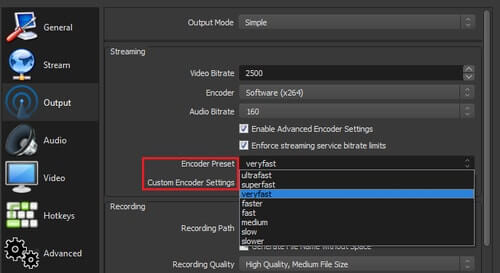
4. Use GPU-based encoder
In last few years, some graphics card manufacturers (Intel, AMD, Nvidia …) started offering hardware encoders on their cards (Quicksync, AMF, NVENC). The idea here is that hardware encoders can take the load out of your CPU and improve your OBS Studio performance. In my opinion, NVENC is currently superior to AMF, Quicksync, and even x264.
To set up Quicksync, take a look at this guide.
If you have trouble with setting up AMF encoder, look here.
This one is for NVENC.
5. Disable two pass encoding
If you are using NVENC and are experiencing OBS Studio encoding overload, you should disable 2 pass encoding. While it is known to provide better video quality by splitting encoding into 2 steps, it is much slower than a single pass encoding and can’t be used while streaming live. Go to Settings > Output (Advanced), and switch the preset from max quality to quality.
6. Don’t use OpenGL
OpenGL is known to be very resource intense. To switch it off, go to Settings > Advanced and in video settings select Direct3D renderer mode.
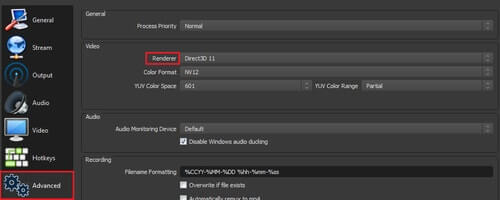
7. Lower the webcam quality
Putting the webcam on highest quality uses quite a lot of resources. Try putting it to 480p, as the main focus is on the gameplay anyway.
8. Close everything you don’t need
If you have an older PC, this might provide useful and it is also very easy to do. Open your task manager and go through the list. Additionally, you can raise the priority of OBS Studio.
9. Lower the bitrate
That’s right, even the bitrate can influence your encoding speed in OBS Studio. Your bitrate should be set at 80% of your upload speed. To test your speed, simply go here.
10. Switch to different Rate Control

Alternatively, you can also switch rate control from CBR to CRF. CRF doesn’t use bitrate but has a number scale (0-23). 0 will use the highest amount of CPU, and 23 lowest. Keep in mind that Twitch doesn’t allow streaming in this mode.
hardware upgrade to stop overloading
If you have a pretty old PC, no amount of tweaks in OBS Studio will save you from encoding overload. For a decent stream and encoding, I would recommend an i7 processor, 16 GB of RAM and NVIDIA graphics card that features NVENC encoder (GT 1030, GTX 1060, etc.). If you are interested in upgrading your PC you can look at our setup articles, which list and review every piece of hardware used by famous streamers.
There you have it! I hope this article solved your problem with OBS encoding overload. Take care.
Check out some of our other articles – Click here


